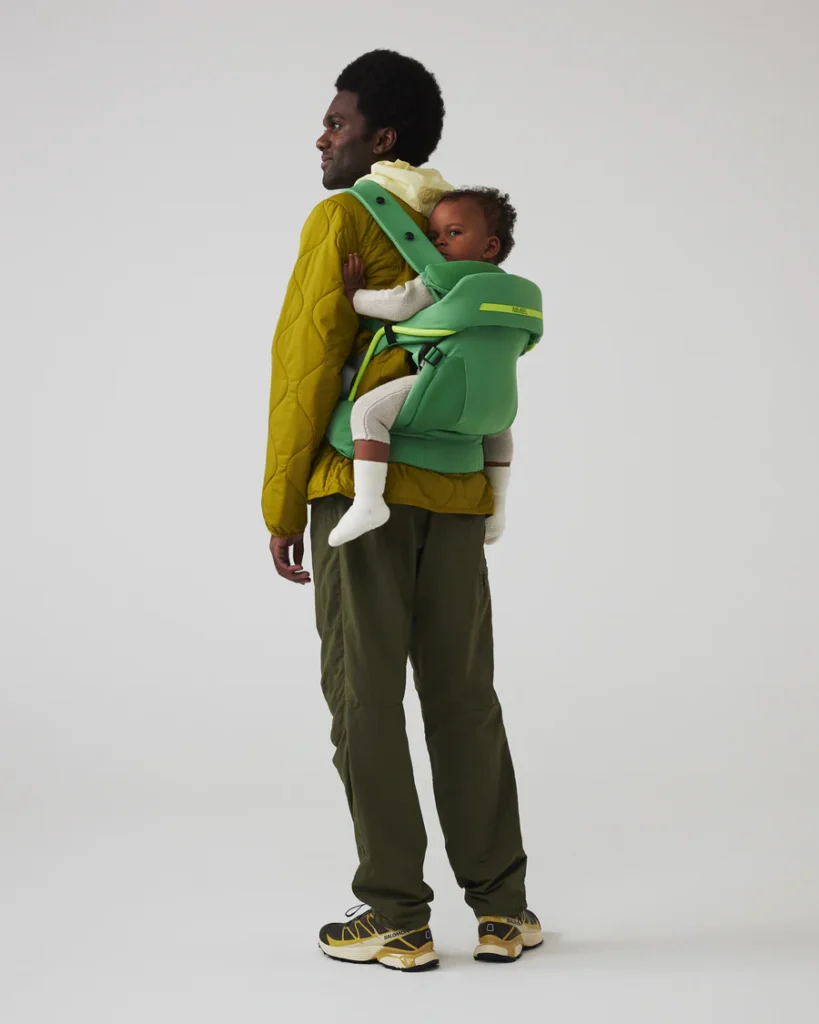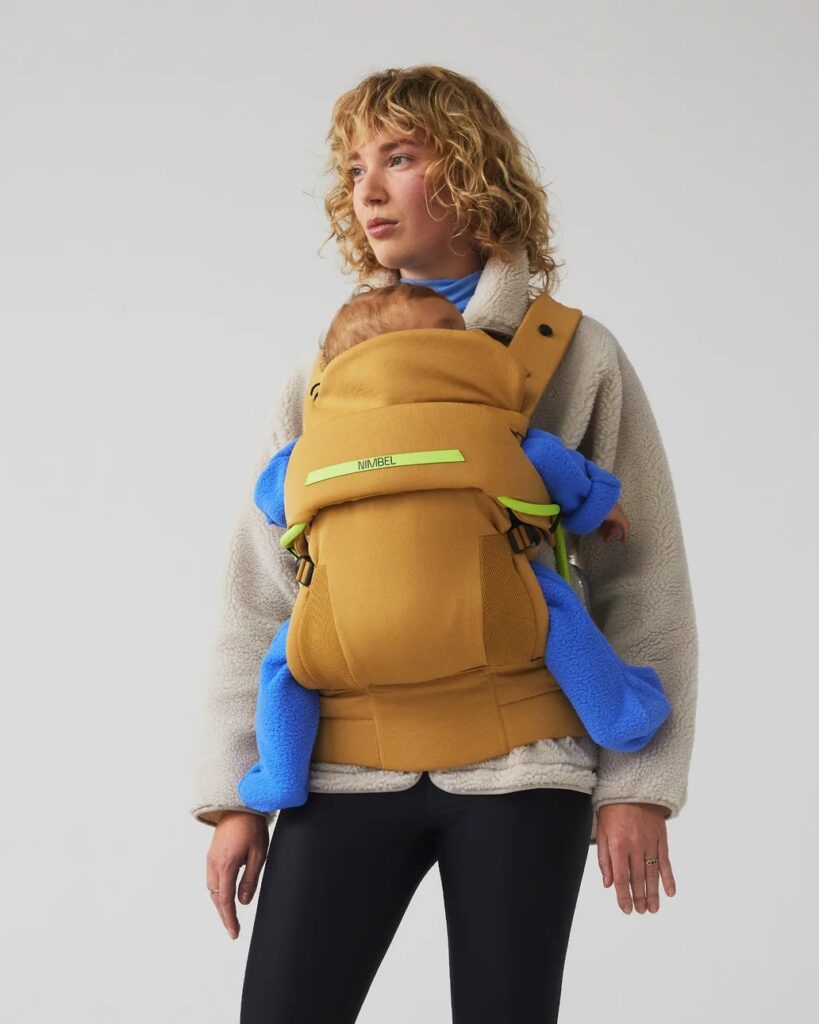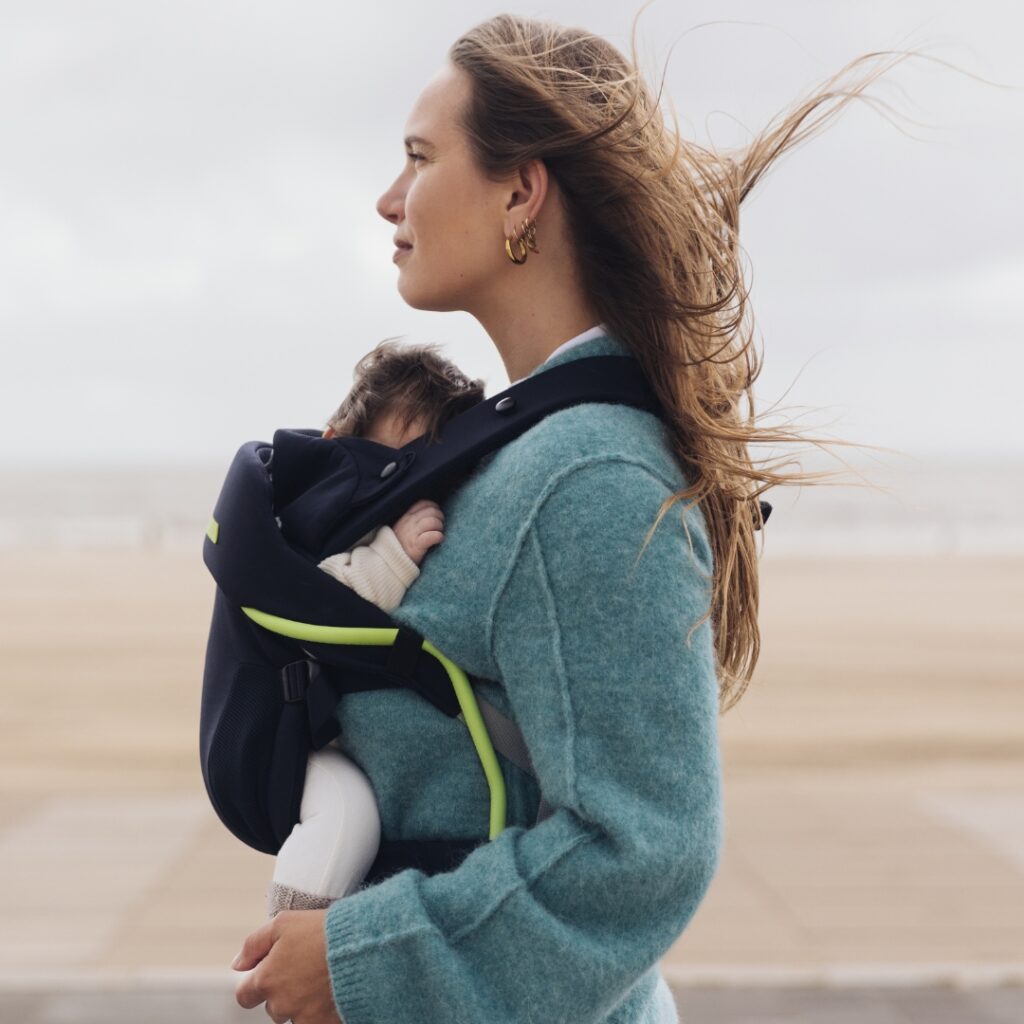NIMBEL – be a professional carrier bag user
Unfortunately, there are also carriers on the market (and even very popular ones) that claim to be suitable from birth to 2-3 years of age, but do not offer adequate adjustment or attachments. You may see people wearing them on the street – you can only see the carrier, but the baby’s head is not visible. This is not right. To carry a baby safely, the baby’s nose and mouth should always be free and visible.
From what age can a baby be carried in a carrier?
You can start carrying your baby in a carrier from the first months of life. Most carriers are suitable for babies weighing 3.2 or 3.5 kg or more. Carrying a baby offers a feeling of closeness and security. It can also help babies with reflux and improve their sleep.
There are special baby carriers and carriers designed for small babies. These are often worn higher up so that the baby is at “music height”. The baby’s weight is mainly distributed on the upper arms, but since the baby is small, this should not be a problem.
There are also carriers, such as NIMBEL, which are suitable for use over a longer period – from birth to about 3. from the age of. NIMBEL has the necessary adjustable backrest and also a special insole. It’s like a cushion on the baby’s bottom, so that the baby sits higher up and is visible from the fabric above.
The NIMBEL carrycot has an interior for small babies and an adjustable backrest.
What should you pay attention to when carrying your baby?
- That the baby is high enough so that his head is at the same height as the music.
- So that your baby’s nose and mouth are always free and visible. This is important so that the baby can always breathe properly.
- To stop your baby’s chin sinking into your breast
- To have a neck support that supports the baby’s head well. The support should extend below the ears.
- To have the legs in an ergonomic “M” position: butt lower than the knees.
- So that the feet do not rest on the edge, as this can cause the baby to push itself away.
What to do if your baby doesn't feel comfortable in a carrier?
Studies show that babywearing is a good bonding activity between parent and child, helping the baby to calm down. However, some babies don’t like to be in a carrier or baby carrier, they cry or become restless every time they are put in one. Sometimes it’s just a matter of habit. Try again when your baby is rested and start by holding her and putting the carrier loosely on her back. Walking or gently rocking often helps the baby to feel more comfortable.
Check that the following problems do not cause discomfort:
- Isn’t the pressure in the back of the baby’s head too high?
- Aren’t the ankles too narrow? Aren’t the legs squashed?
- Can your arms, lower leg and head move freely?
- Is the bag or shirt not too tight?
- Is your baby not too hot or cold?
How can you avoid shoulder pain when carrying your baby in a carrier?
This question was the main reason why we developed the NIMBEL baby carrier! In a normal carrycot or sling, most of the weight falls on the shoulders. Many carriers have a waist, but only a small part of the weight is transferred to the waist. If the shoulder straps were to be loosened, the baby would fall off, as most of the weight is on the shoulders – which is understandable, as the carrier is usually just fabric, with no reinforcement.
This is actually quite strange. It has long been known that hiking backpacks are much more comfortable and sustainable when the weight is mainly on the hips. For this reason, backpacks have frames to help transfer the weight to the hips.
We have applied this simple principle to the NIMBEL baby carrier. Two external reinforcing arms direct the baby’s weight directly onto the hips. If you loosen the shoulder straps on the NIMBEL carrier, the baby will still sit firmly (for extra safety, we always recommend using both shoulder straps!).
To avoid shoulder pain, neck pain and upper back pain, use the NIMBEL carrying bag and adjust the shoulder straps to fit. By tightening and loosening the shoulder straps, you can play with how much of the weight falls on the hips and how much on the shoulders.




